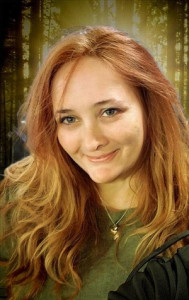Safety Supervisor Connect- Dr. Boyce Interview
Description
Vocal Characteristics
Language
EnglishVoice Age
Young Adult (18-35)Accents
North American (General)Transcript
Note: Transcripts are generated using speech recognition software and may contain errors.
uh, welcome to this follow up episode of Safety Supervisor Connect I have with me Dr Voice of Center for Behavioral Safety. How are you, Dr Boyce? I'm doing fine. How are you today? Fine. Thank you for joining us. My pleasure to be here. We get numerous questions on the Internet from folks who are interested in improving their safety and work cultures. I wondered if you could respond to a couple of questions that we've been been able to get from some of the people that you work with. Um, we want to ask about tpp. Not this was posted by anonymous. Does the PP makes sense, and if so, does it work? Well, v p P. Stands for voluntary protection. On it is a program that was initially developed by the Occupational Safety and Health Administration. Um, one of the miss snorers about the program is that it is actually kind of a one size fits all approach. This knocked. It is concept really trying to do is to get organizations to go beyond mere compliance with federal state regulations to really start tapping into the creative on tropical entrepreneurial spirit of their employees to truly work towards an injury free I work place. So in theory, V P P is a great idea and when put in practice, it actually does work very well. A couple of the key components of a voluntary protection program are activities that get the employees involved in their own safe, behavior based safety process, such as that we teach the banks on observation and feedback would certainly qualify as such. Another key components management support for safety. So management has a key role in working with and communicating with thief frontline workforce in order to solve critical issues and to develop a culture of continuous improvement. And another key component is hazard analysis or risk assessment. In addition to focusing on actions and what people are doing on a day to day basis to keep themselves safe. We want to make sure that they have the safest environment possible. So where we can we want to eliminate hazards where we can't eliminate them, we want to appropriately manage them. Once we've managed those hazards, we want to teach people to behave safely with respect to those hazards because we can't engineer all of the risk out of environment. So when these components start working together. Voluntary protection programs work very, very well. Key trap to avoid is that there are many ways to develop each of these components, which I mentioned briefly. And I should say that there are a couple of other components that we won't have the opportunity to go into here today because of the time we've been allotted great. And what types of businesses usually want to go for the V P. P Well, interestingly, those businesses that have historically been very successful with safety or the ones that choose to take this step. They're not usually the ones that have lost control, and they're struggling with their total recordable injury rate, which is that hard number that we're really trying to reduce. But it's usually the ones that have been otherwise very successful. It could be, for example, one of the clients that I work with that has adopted and customized behavior of a safety process for their organization to extend this out to address some of the other components. More formally, so really, it iss those that are typically already being very successful. They're just trying to be the best that they can be voluntary protection programs are often the way that those folks get to achieve a record of zero injuries and are also helping to sustain that. And with these big companies, such a Z oil companies or manufacturing businesses, usually heavy industry. So both of the above also mining organisations off of mine Safety and Health Administration doesn't have a formal V P P programs such as OSHA. Um, I certainly have had the opportunity to work with some very large mining operations that embrace the key components of voluntary protection, and it works extremely well. Well, thank you for your comments, Doctor voice. We sure look forward to talking to you next time on our podcast for safety supervisor Connect. I'm hoping to get some more questions, and we'd like to have people. Email us at w w dot c b safety dot com. That's season Charlie B is in Bravo, in the words safety dot com. You can also send us an email through our email account, which is admin a d m i n at CB safety dot com or give us a call at area code for 157939166 Talk to you soon. Thank you
